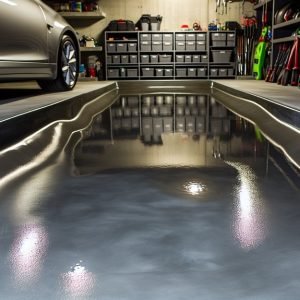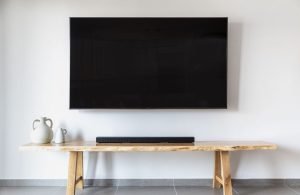Last Updated on October 30, 2025 by teamobn
Plumbing issues, a constant thorn in the side for many homeowners, can appear unexpectedly and strain everyday household operations. Common problems such as ongoing blockages, slow drains, and rapidly deteriorating pipes are recurring plights that warrant serious concern. Fortunately, the modern innovation of pipe relining presents a comprehensive solution to these traditional predicaments.
Pipe relining serves as a facilitator for the restoration of existing pipe assets without the necessity for complete replacement, thereby saving costs and personal time for homeowners. However, distinguishing when pipe relining is needed is a critical attribute for the successful maintenance and extended longevity of your home’s plumbing system.
This comprehensive guide seeks to equip homeowners with insights that will lead them to make informed decisions about pipe relining and their plumbing system’s health.
Contents
Understanding Pipe Relining
Let’s begin with a detailed explanation of pipe relining. Also known as cured-in-place pipelining, pipe relining is a method used by plumbing professionals to repair existing pipelines without the need for intrusive and often inconvenient excavation.
This highly advanced technology involves inserting a resin-coated lining into existing damaged or deteriorated pipes, which forms a second pipe within the original once it is cured.
In comparison to traditional pipe replacement methods, which involve significant digging, pipe relining is markedly less invasive. In the standard pipe replacement process, the earth must be excavated to access the pipe for replacement.
This includes impinging upon landscaping, driveways, and even the foundational structures of homes if the damaged pipe is inconveniently located. Conversely, pipe relining utilises existing access points to insert the new lining, thereby avoiding infrastructural disturbances altogether.
The convenience of pipe relining doesn’t stop at its non-intrusive nature. Pipe relining is beneficial for several reasons: it’s faster to implement and requires less labour, thereby reducing the overall service cost. It also provides a seamless, joint-free lining within the existing pipe, which minimises future blockages and resists tree root invasions, which were historically frequent issues with traditional pipe systems.
Typically, pipe relining employs certain materials renowned for their durability and longevity. Among these, epoxy resins and felt liners are frequently used for their excellent resistance to corrosion. These materials effectively extend the utility life of relined pipes, positioning pipe relining as a smart, long-lasting, and cost-effective solution against damaged and broken pipes.
Frequent Plumbing Blockages and Slow Drains
Persistent blockages in your home’s plumbing system can create a major headache. These might be indicated by recurring signs like consistent gurgling noises, unpleasant odours emanating from pipes, or water starting to back up. More than just a source of inconvenience, these symptoms could signify more severe issues within your piping infrastructure.
Slow drains can sharply limit the effectiveness of your daily household activities. They might manifest during showers with water stagnating at your feet, washing dishes with the sink taking forever to drain, or even flushing the toilet only for it to refill without draining first.
These suggest a serious obstruction impeding the flow of water, which could be due to accumulations of grease, soap scum, food debris—or even solidified clumps of hair and other foreign objects.
Regular blockage problems can typically be traced back to serious faults within the pipes caused by severe corrosion or tree root intrusion. If blockages are not promptly addressed, these issues can lead to persistent and escalating problems.
The good news is that pipe relining can effectively resolve such fundamentally entrenched issues. By creating a strong, joint-less obstruction-resistant barrier within the existing pipe, pipe relining stops blockages from recurring.
Presence of Tree Root Intrusion
Our environment plays a colossal role in the health of our plumbing systems—especially with natural factors such as tree roots. Drawn to the regular water supply, tree roots can make their way into pipe systems with the tiniest defects or openings. Over time, the roots grow and infiltrate pipes, leading to substantial damage due to blockages.
Identifying tree root intrusion can be achieved through observing symptoms such as unreflectively slow drains, an unexpected reduction in water flow, or—during severe cases—observing a complete blockage. Once the roots have successfully infiltrated the pipe, they can widen the cracks and cause the pipe to rupture.
Certain pipe materials, especially traditional ones like clay and concrete, are especially susceptible to damage from tree roots. However, pipe relining has shown to be a particularly effective countermeasure by sealing off the roots’ entry points and reinforcing the pipe’s structure. The method not only remediates existing damage but also serves as a form of prevention against future root intrusions.
Age and Material Deterioration of Pipes
The lifespan of plumbing pipes depends largely on the materials used during installation. For instance, standard copper pipes in residential applications can last anywhere from 50 to 70 years, while PVC pipes have a typical lifespan of around 25 to 40 years. However, as the years progress, every pipe type—regardless of material quality—may exhibit signs of wear and damage.
Indicators of aging pipes can be detected through discoloured water, leakages, and lowered water flow in some instances. Corrosion, especially in metallic pipes, can lead to leaks, impurities seeping into the water, and overall degradation of water quality. External environmental factors such as soil conditions, water acidity, and ground movement can also influence pipe longevity.
Pipe relining presents itself as an adept solution for aging and deteriorated pipes. As opposed to opting for a complete replacement—which is often pricey and disruptive—relining can significantly extend the life of existing pipes.
In some cases, after undergoing the pipe relining process, the aged pipelines can serve for an additional 50 years or more. This method fortifies the integrity of the pipe while ensuring minimal disturbance to the surrounding environment and infrastructure.
Cost and Time Efficiency Considerations
When presenting a consideration matrix for potential plumbing solutions, cost and time invariably feature as prime factors. Traditional pipe replacement, with its additional labour costs for excavation and post-replacement restoration efforts, can significantly strain your wallet.
On the flip side, pipe relining typically appears more cost-friendly as it requires fewer technicians and reduces the total working hours, ultimately leading to a reduced labour cost.
For homeowners exploring their options, understanding how much pipe relining costs is an essential part of the decision-making process. The price varies depending on factors such as the length and diameter of the pipes, the severity of the damage, and the specific materials used during the relining process.
Despite these variables, pipe relining often proves to be a more economical solution compared to traditional pipe replacement, especially when considering the long-term savings from its durability and efficiency.
The expedited time frame provided by pipe relining is a standout feature. While traditional pipe replacement could take weeks—weather conditions permitting—pipe relining can be completed predominantly within a day or less. This efficiency reduces disruptions in a household’s routine, letting normal family life carry on as quickly as possible.
When presenting a consideration matrix for potential plumbing solutions, cost and time invariably feature as prime factors. Traditional pipe replacement, with its additional labour costs for excavation and post-replacement restoration efforts, can significantly strain your wallet.
On the flip side, pipe relining typically appears more cost-friendly as it requires fewer technicians and reduces the total working hours, ultimately leading to a reduced labour cost.
For homeowners exploring their options, understanding how much pipe relining costs is an essential part of the decision-making process. The price varies depending on factors such as the length and diameter of the pipes, the severity of the damage, and the specific materials used during the relining process. Despite these variables, pipe relining often proves to be a more economical solution compared to traditional pipe replacement, especially when considering the long-term savings from its durability and efficiency.
The expedited time frame provided by pipe relining is a standout feature. While traditional pipe replacement could take weeks—weather conditions permitting—pipe relining can be completed predominantly within a day or less. This efficiency reduces disruptions in a household’s routine, letting normal family life carry on as quickly as possible.
Environmental and Property Considerations
Shining a spotlight on wider issues, pipe relining is recognised as having a significant positive impact on the environment. The process is considerably less disruptive to the natural landscape, preserving the soil’s integrity and reducing waste generated from excavations.
In terms of property, pipe relining mitigates structural threats. With traditional methods threatening potential damage to driveways, gardens, and even foundational building infrastructure—leading to extra repair costs—pipe relining maintains the property’s structural integrity while significantly improving plumbing systems.
On the sustainability front, pipe relining is an indisputable front-runner. The method extends the effective service life of existing pipes, thus reducing the demand for new resource production and the associated energy expenditure on manufacturing.
For those mindful of their property’s market value, pipe relining can also be a positive element. Considering the market dynamics of modern real estate, buyers tend to lean towards homes with energy-efficient and sustainable utilities. Pipe relining checks these boxes while possibly having favourable impacts on home insurance premiums, as the risk of structural failure or water damage is substantially diminished.
Conclusion
Identifying the signs that point towards the requirement for pipe relining can save homeowners significant costs and prevent unnecessary troubles down the line. Crucial indicators, including regular blockages, tree root intrusion, and visibly deteriorating pipes, serve to highlight the pressing need for this efficient and cost-effective solution.
Ultimately, pipe relining offers a broad spectrum of advantages to homeowners. These span across important aspects such as cost-effectiveness, environmental sustainability, and reduced property disruption. It represents a wise investment that guarantees an increased lifespan for a property’s plumbing system, with the added benefit of preserving the surrounding environment.
Homeowners facing recurring plumbing issues are advised to engage with qualified plumbing professionals to assess their specific requirements and consider the option of pipe relining. A preventive action today can safeguard your home’s plumbing system for years to come and lend you a peaceful state of mind, knowing your pipes are well protected.






